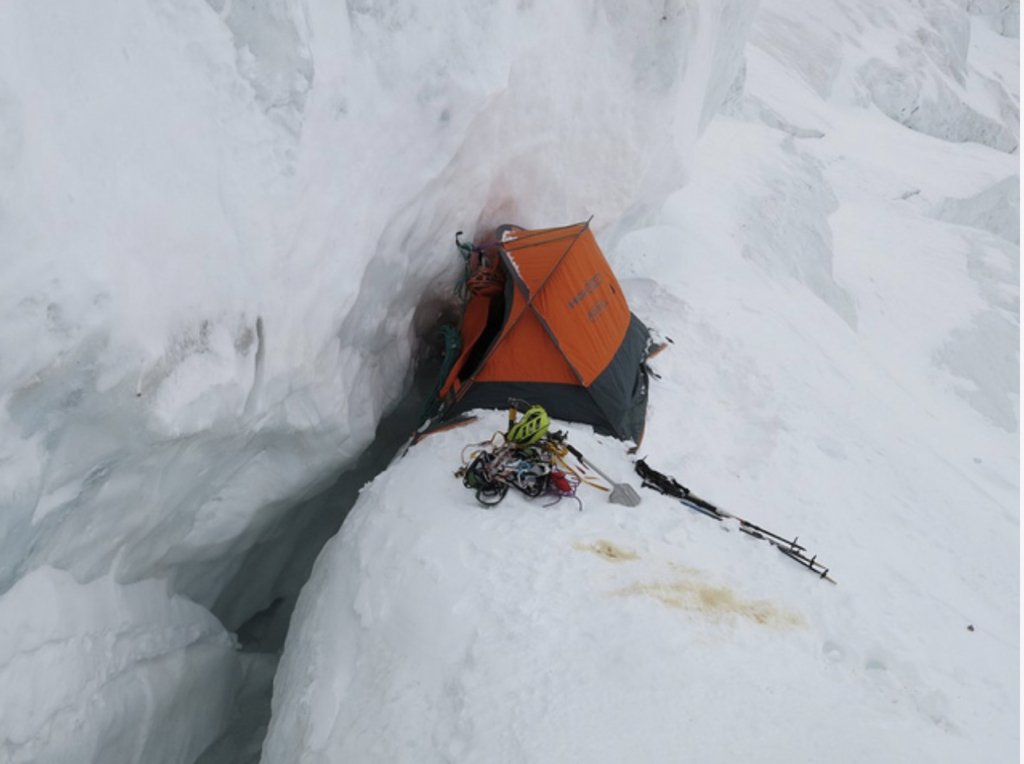Search party flown to Nanga Parbat Base Camp to help find missing British climber and his Italian partner
Herald Report
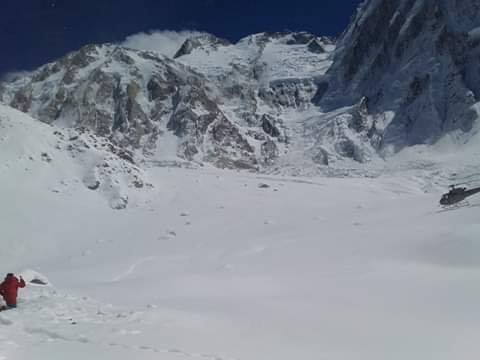
A search for two climbers missing on the world’s ninth-highest mountain resumed on Monday after being hampered by bad weather, media outlets reported.
Basque climber Alex Txikon and three of his team, together with Pakistani climber Ramatullah Baig, finally made it by helicopter to Nanga Parbat Base Camp, in the hope of finding traces of the two missing climbers, the ExplorersWeb reported.
Txikon’s team have set up an operational camp between Camp 1 and Camp 2. While the expedition’s engineer Ignacio de Zuloaga is preparing the drones to scout the Mummery Spur sections, Txikon and another team member set off for a search on foot up the mountain’s lower sections, the online mountaineering portal said.
According to the latest report, the two had reached Camp 2 at 4,850m and apparently intended to climb further up until Camp 3, before returning to the base.
Mr Baig had been a member of the Daniele Nardi and Tom Ballard’s team but abandoned the expedition at the end of January due to what he considered excessive risk of avalanches and bad conditions on the peak.
Earlier today, he was picked from his home village of Jaglot by one of the two Écureuil B3s helicopters of the Pakistani Air Force involved in the search operation.
Before the foot search, one of the helicopters scouted the wall up to 7,100 meters on a 50-minute-long reconnaissance flight, with Txikon and Baig on board. Baig’s indications were essential, because he exactly knows the route followed by the missing climbers on their way towards the Mummery Spur.
Tensions over Kashmir and bad weather scuppered plans to search the 8,126-metre (26,660ft) peak, nicknamed the “Killer Mountain”.
Last Thursday, when a helicopter was able to survey the higher slopes, searchers saw recent avalanche debris and a partly buried tent, but at a lower level than expected, and away from the duo’s planned route. But low cloud, snow and high winds have hampered rescue efforts.
Rain, wind and low clouds again postponed the increasingly urgent search Italian Daniele Nardi and Briton Tom Ballard, who have been missing since February 24.
The rescue mission has faced several setbacks already. The arrival of helicopters was temporarily thwarted on Thursday when Pakistan closed its air space after the shooting down of two Indian military planes in an escalation of tensions over the Kashmir region.
According to Pontecorvo, initial payment problems for upfront fees for the rescue mission had been solved, reports The Guradian.
Snow, clouds and low visibility forced searches on Friday, Saturday and Sunday but as the skies cleared on Monday, two military helicopters took off from Skardu with Txikon and his three colleagues, including a physician, to join Pakistani mountaineer Muhammad Ali Sadpara who is already at the base camp.
Italian ambassador Stefano Pontecorvo tweeted on Monday that he had sought the “extremely helpful” advice of Txikon, who had summited the first winter ascent of Nanga Parbat three years ago.
Pakistan dispatched search helicopters last week despite the closure of its airspace amid tensions with neighbouring India over the disputed Himalayan region of Kashmir but didn’t manage to find the climbers, Dawn newspaper reported.
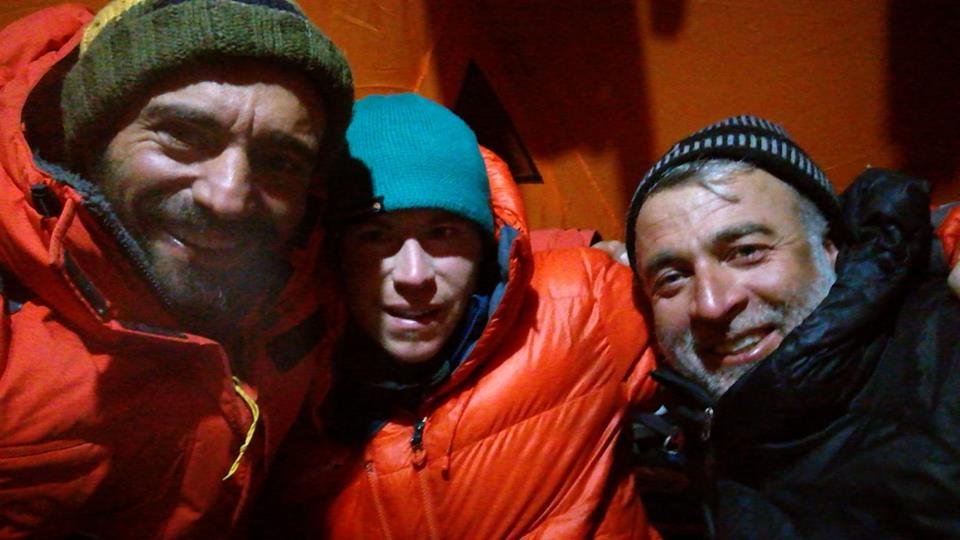
Sadpara, who joined the search team, spotted a snow-covered tent of the climbers on Thursday. Nardi’s team had said in a Facebook post that traces of an avalanche were evident in the area.
The two climbers set out on the climb on Feb 22, making it to the fourth base camp by the following day.
Nardi has attempted the Nanga Parbat summit in winter several times in the past.
Ballard was born in Derbyshire but moved to Scotland in the same year his mother, Alison Hargreaves, died on K2 in 1995 when she was 33, months after becoming the first woman to conquer Everest unaided. In 2015, he became the first person ever to solo climb all six major north faces of the Alps in one winter.
News of difficulties on the world’s highest mountains often unfolds excruciatingly slowly. A contact call is missed. A storm descends. Hours stretch to days until a sense of crisis solidifies.
The last communication with Nardi and Ballard was a satellite phone call to their base camp on February 24 from around 6,000 metres. They were attempting to climb the Himalayan giant in winter via a rock spur called Mummery Rib, on its west face, The Guardian reported.
Family tragedy haunts the hunt for climber
Nanga Parbat, nicknamed “Killer Mountain”, has featured in some of Himalayan climbing’s darkest as well as most famous episodes. British mountaineer Albert Mummery disappeared on the mountain in 1895 with two Ghurka companions, and it was finally conquered in 1953 by Herman Buhl, who barely survived after spending a night on a ledge during his descent, writes Peter Beaumont in The Observer.
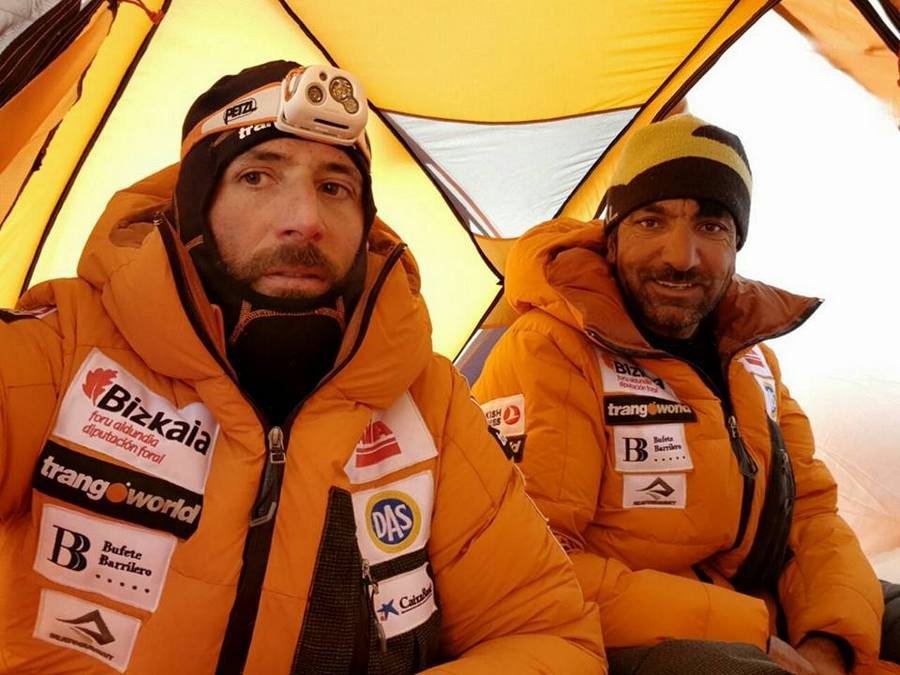
In 1970, in a controversy that still resonates today, Gunther Messner, brother of the most famous Himalayan mountaineer, Rheinhold Messner, was lost as the two men descended. Climbed for the first time in winter in 2016, Nanga Parbat remains a daunting prospect in any season, he recalls.
Nanga Parbat was only the second Himalayan expedition for Ballard, a man described by his peers as a “strong, talented and very capable climber” in a field where experience and persistence in the face of repeated failure is often the key.
The sense of shock in the small world of Himalayan mountaineering has been compounded by the similarities with the death of Ballard’s mother 24 years ago, the newspaper wrote.
Like her son, Hargreaves was an outstanding young alpine climber. She, too, had soloed the six alpine faces in summer. Pipped at the post in her ambition to be the first British woman to climb Everest, she climbed the world’s highest mountain without oxygen and unsupported – still a rare achievement – in a summer in which she also planned to climb K2 and Kanchenjunga – the world’s second and third-highest mountains respectively. A few months after Everest, however, she died during her descent of K2.
After her death a biography of Hargreaves, Regions of the Heart, by David Rose and Ed Douglas, considered what might have driven her to undertake this challenge, suggesting a problematic marriage as a possible motivation. Then, around five years ago, Tom Ballard burst on to the climbing scene in his own right. Something of a loner, he had built up a quiet resumé of first winter ascents in Scotland before coming to wider attention with a feat many saw as echoing his mother’s round of alpine solo climbs, except in winter, Mr Beaumont writes.
Climber-turned-documentary film maker Sean Smith, one of a handful of Britons to have attempted Nanga Parbat in winter, says he can understand the appeal. “In one respect it’s grim: the days are super cold and it can feel like the Somme, a daily battle for survival,” he says. “Everything freezes up and the mountain is swept by massive avalanches.
“But it’s also amazing. If you have the level of experience you can understand the challenge. Some of those days leading out the route are my most memorable days climbing. It’s as close as you can get to being on another planet – on the very edge of existence and in the most beautiful place.”
Mountain guide Sandy Allan, who has climbed Nanga Parbat twice, is a Ballard family friend. He describes Alison Hargreaves as “amazing” and Tom Ballard as similar in talent. “The face is absolutely massive,” he says. “We climbed a route that takes you past the bottom of the Mummery Rib. For someone like Tom, climbing at the top of his game, the ridge would be a pretty easy approach. But when you get to the top, there is a big plateau with seracs [glaciated ice peaks] at its edge and it gets quite dangerous, strafed by falling ice.”
The scale of that step up was dramatised by what Ballard and Nardi found when they arrived at their base camp. According to a blogpost on the website of Ballard’s sponsor, Montane, deep snow on the mountain – up to four metres in places – forced them to abandon one of their camps. As the weeks dragged on, one of two Pakistani climbers in the team fell ill and left. A second then withdrew, concerned at the conditions.
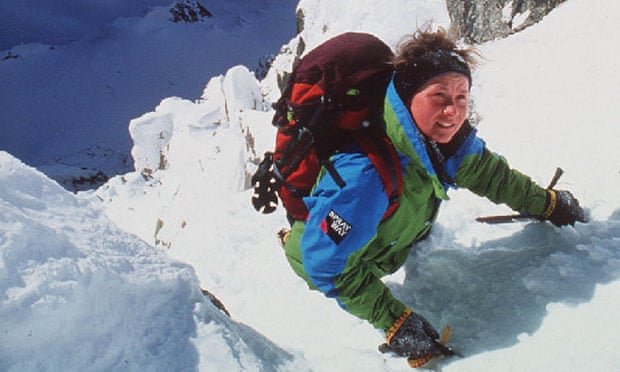
Nardi told a Russian climbing website: “After the heavy snowfall, something has changed inside him. More than once he said: ‘I don’t want to lose my life on this mountain’.”
The two of them decided to press on. In Nardi’s last communication, reported by Italian news website Le Iene, he tells how Ballard had just discovered a new route up a gully: “We saw a couloir of ice and snow in the midst of the rocky walls that would allow us to go up much faster.” At that point, they had reached a long slope of soft snow, bare ice and rocks at around 6,300 metres, from which they descended to make camp at 6,000 metres – their last known location.
Those who know the men still hope they are safe somewhere, trying to retreat, the batteries flat in their sat phone or the signal blocked by weather. Until then the painful wait for news continues, Beaumont writes.
Climbers Jack Geldard and Nick Brown documented Ballard’s alpine solos for website ukclimbing.com. “Before meeting Tom,” they wrote in 2015, “we’d read a lot about him. We’d stumbled upon his efforts as a teenager to arrange an expedition to K2 to be the first person to climb the mountain in winter, and the first to solo it – a hugely dangerous objective.” They carefully concluded: “There’s no denying that part of Tom’s motivations come directly from his mother’s legacy. He’s chosen the same mountains, the same path, and he too wants to be a professional climber.”
More recently, Tom Ballard was accumulating experience on bigger mountains before finally announcing his plans for Nanga Parbat in winter. This would be far removed from the guided climbers ascending fixed ropes each year on Everest. Those involved would be climbing in a small team and in the depths of winter, when winds can regularly reach hurricane force.

